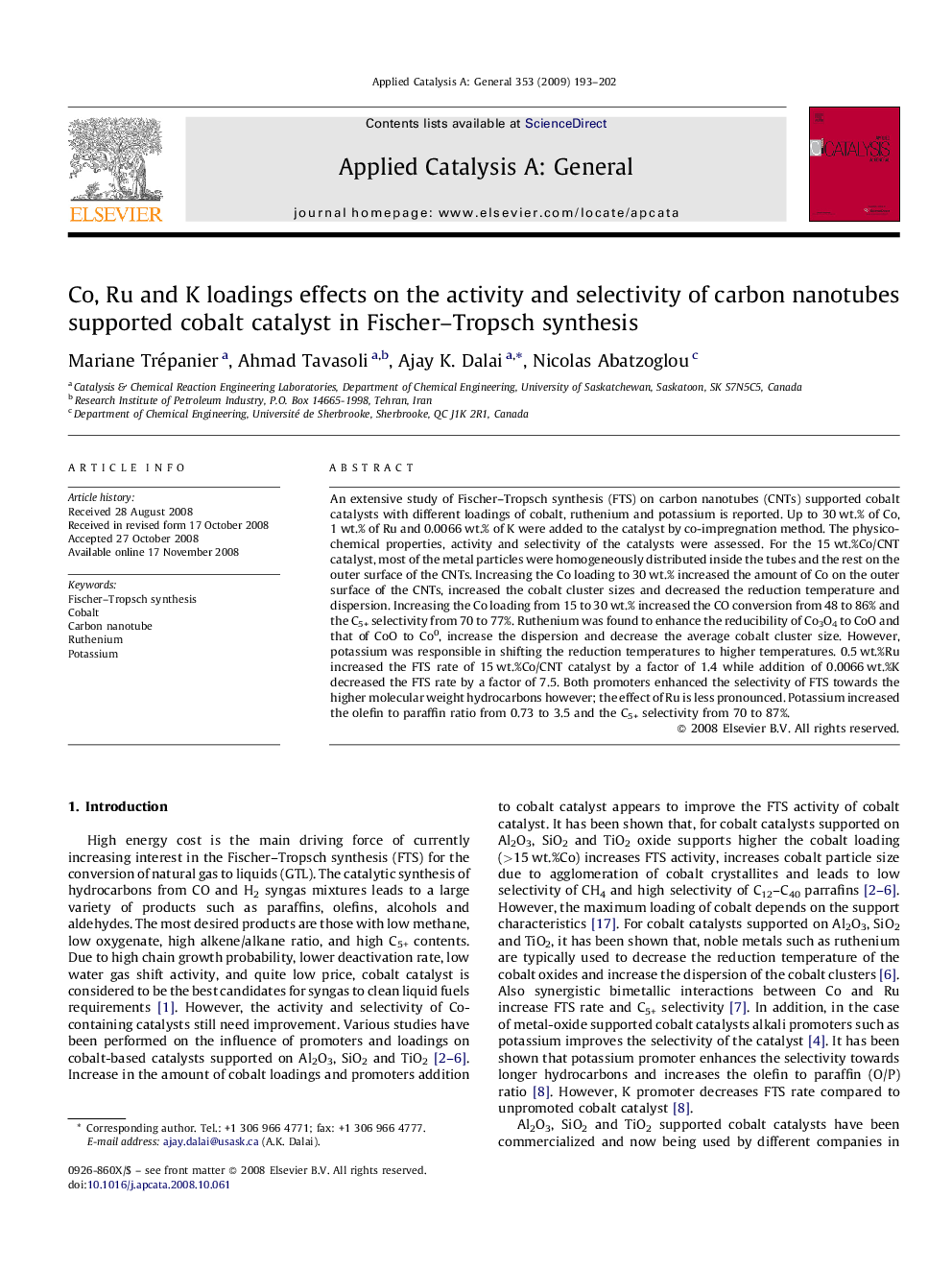| Article ID | Journal | Published Year | Pages | File Type |
|---|---|---|---|---|
| 42941 | Applied Catalysis A: General | 2009 | 10 Pages |
An extensive study of Fischer–Tropsch synthesis (FTS) on carbon nanotubes (CNTs) supported cobalt catalysts with different loadings of cobalt, ruthenium and potassium is reported. Up to 30 wt.% of Co, 1 wt.% of Ru and 0.0066 wt.% of K were added to the catalyst by co-impregnation method. The physico-chemical properties, activity and selectivity of the catalysts were assessed. For the 15 wt.%Co/CNT catalyst, most of the metal particles were homogeneously distributed inside the tubes and the rest on the outer surface of the CNTs. Increasing the Co loading to 30 wt.% increased the amount of Co on the outer surface of the CNTs, increased the cobalt cluster sizes and decreased the reduction temperature and dispersion. Increasing the Co loading from 15 to 30 wt.% increased the CO conversion from 48 to 86% and the C5+ selectivity from 70 to 77%. Ruthenium was found to enhance the reducibility of Co3O4 to CoO and that of CoO to Co0, increase the dispersion and decrease the average cobalt cluster size. However, potassium was responsible in shifting the reduction temperatures to higher temperatures. 0.5 wt.%Ru increased the FTS rate of 15 wt.%Co/CNT catalyst by a factor of 1.4 while addition of 0.0066 wt.%K decreased the FTS rate by a factor of 7.5. Both promoters enhanced the selectivity of FTS towards the higher molecular weight hydrocarbons however; the effect of Ru is less pronounced. Potassium increased the olefin to paraffin ratio from 0.73 to 3.5 and the C5+ selectivity from 70 to 87%.
Graphical abstractAn extensive study of FTS on CNTs supported Co catalysts with different loadings of Co, Ru and K is reported. Up to 30 wt.% of Co, 1 wt.% of Ru and 0.0066 wt.% of K were added to the catalyst by co-impregnation method. The physico-chemical properties, activity and selectivity of the catalysts were assessed. Increasing the Co loading increased the cobalt cluster sizes, the CO conversion and the C5+ selectivity and decreased the reduction temperature and dispersion. Ru was found to enhance the reducibility of Co3O4 to CoO and that of CoO to Co0, increase the dispersion and decrease the average cobalt cluster size. However, potassium was responsible in shifting the reduction temperatures to higher temperatures. Ru increased the FTS rate while addition of K decreased the FTS. Both promoters enhanced the selectivity of FTS towards the higher molecular weight hydrocarbons. Potassium increased the olefin to paraffin ratio. Figure optionsDownload full-size imageDownload as PowerPoint slide
